SHOOTING A PINFIRE REVOLVER
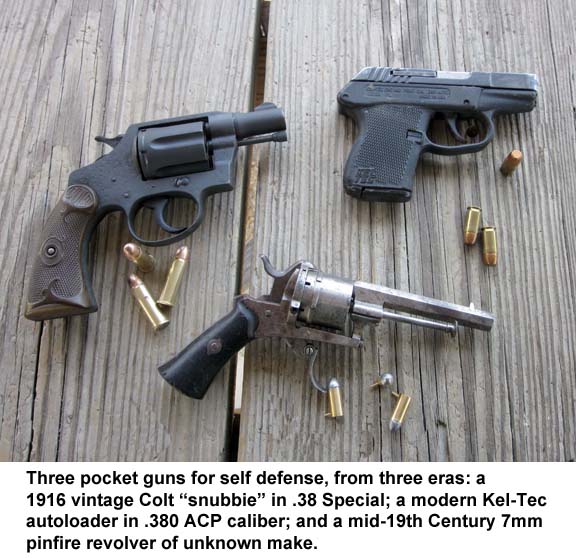
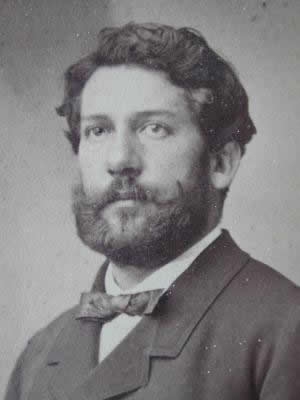 The pinfire system of ignition, one of the first practical forms of true fixed ammunition, was the brainchild of Casimir Lefaucheux (1802-1852) a French gunsmith. He received patent #6348 for a tip-up breech loading pistol using a self-contained cartridge in which a pin passed through the outside of the case and rested on a percussion cap enclosed within. A blow on the pin would detonate the cap and set off the main charge. This Système Lefaucheux was a major development in the evolution of small arms.
The pinfire system of ignition, one of the first practical forms of true fixed ammunition, was the brainchild of Casimir Lefaucheux (1802-1852) a French gunsmith. He received patent #6348 for a tip-up breech loading pistol using a self-contained cartridge in which a pin passed through the outside of the case and rested on a percussion cap enclosed within. A blow on the pin would detonate the cap and set off the main charge. This Système Lefaucheux was a major development in the evolution of small arms.
While Casimir Lefaucheux (who died quite young) lived to see his invention become a commercial success, it was his son Eugene (1832-1892, at right) whose patent #19380, issued November 4, 1854 introduced the so-called "Model 1854" revolver using the pinfire ammunition his father had invented. The Model 1854 and its derivatives were adopted for military use by many European nations and played a significant role in the American Civil War: the Union forces purchased 11,830 of them, and the Confederate forces somewhere between 2000 and 3000.
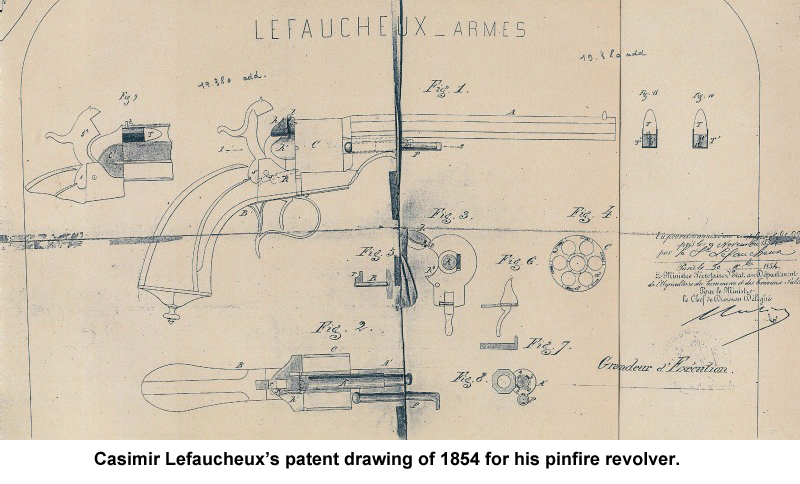
The actual number of pinfire handguns made will never be known. Hundreds of thousands were turned out, mostly by the huge Belgian arms industry of the mid to late 19th Century. Most of them were small caliber revolvers (7mm and 9mm) with folding triggers, a flip-open loading gate and a rod ejector. They were cheap and became enormously popular for self-defense in a crime-plagued era with few restrictions on the carrying of concealed weapons. But by the end of the 19th Century, the Système Lefaucheux was on the way out. Today pinfire guns are encountered only as collector's novelties; pinfire ammunition is no longer made except in the form of tiny 2mm blanks used in minuscule "key chain" guns.
Considering how many of these guns have survived it's a bit surprising that no one is still making cartridges for them: many are good condition and some are positively exquisite examples of gun making. People who own pinfire revolvers as curiosities may wonder how effective they were for the intended purpose. Thanks to the H&C Company in France, I had a chance to find out how one stacks up against more modern equivalents.
H&C makes a kit that can be used to prepare cartridges for 7mm, 9mm, and 12mm pinfire revolvers and also 16 gauge pinfire shotguns. I had acquired a generic Belgian pocket revolver in 7mm, and the owner of the company, M. Phillipe Vial, was kind enough to provide one of his clever self-contained kits in that caliber.

The kit includes a number of heavy-duty brass cases (which appear to be precision turned from solid bar stock), and a "U" shaped cap holder to be inserted into the base of the case. This latter holds a common #11 percussion cap in the correct position; a hole in the "U" corresponds to a hole in the side of the case. Brass firing pins pass through the holes, coming to rest on the properly positioned cap. The primed case is inserted into a special holder (with a slot for the pin); a charge of black powder is put into the case, and the bullet seated with the combination seater/sizer die.et voilà a fully loaded (and theoretically reloadable) cartridge is ready for use.
Each kit comes with 12 re-usable cases, 24 specially-made cast bullets, and the cap holders as well as a threaded rod to position them correctly. There is also a sizer/seater die and the loading base, and a small powder measure. More supplies can be ordered. The same #11 caps used in muzzle-loading rifles and revolvers, usually readily available, are used as primers.
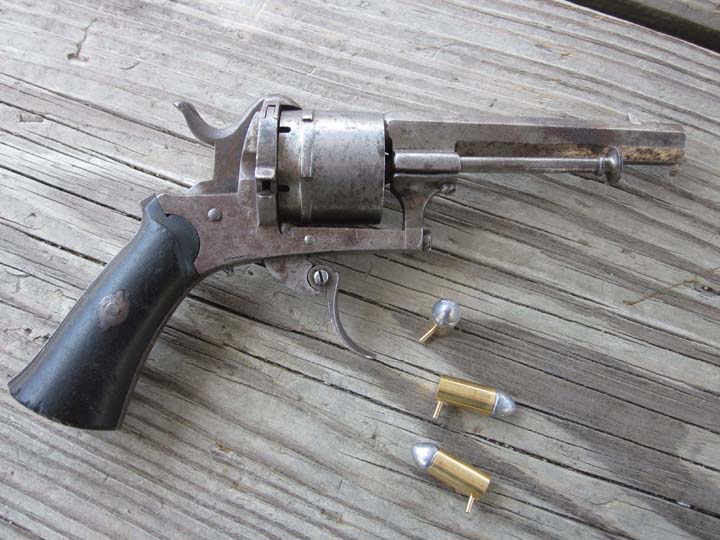
My little gun is a well-used specimen bearing no indication of who made it (typical of Belgian "cottage industry" guns of the period) made between 1865 and 1885. It has all the familiar features including a folding trigger. The workmanship in these revolvers varies with the maker, but mine is fully functional despite being well over a century old. There is no finish left (and there may never have been one at all: many of them were left in the white) but the bore is in decent condition and the cylinder locks up. The lockwork is exceedingly simple, with only three moving parts to effect both double and single-action firing.
Playing with it gave me an appreciation for M. Eugene Lefaucheux's clever design and also for its inherent drawbacks. The patent drawings show a revolver clearly patterned after an open-top Colt, with some refinements that the nature of the pinfire system make necessary. The first is an elevated rim on the recoil shield, projecting above the pins to prevent them from being hit if the gun is dropped. It's worth noting that one drawback to the pinfire system is that any blow on a pin will set the cartridge off. Spare rounds had to be carried in a holder with a recess for the pin, not loose in a pocket or pouch, which would be a manifestly unsafe practice! The second modification of the design is a notch cut in the lower frame to allow the protruding pins to pass, preventing jamming of the cylinder.
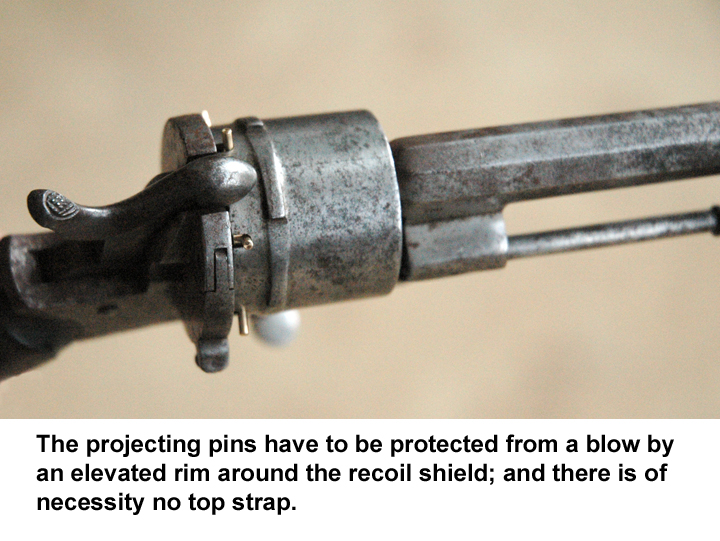
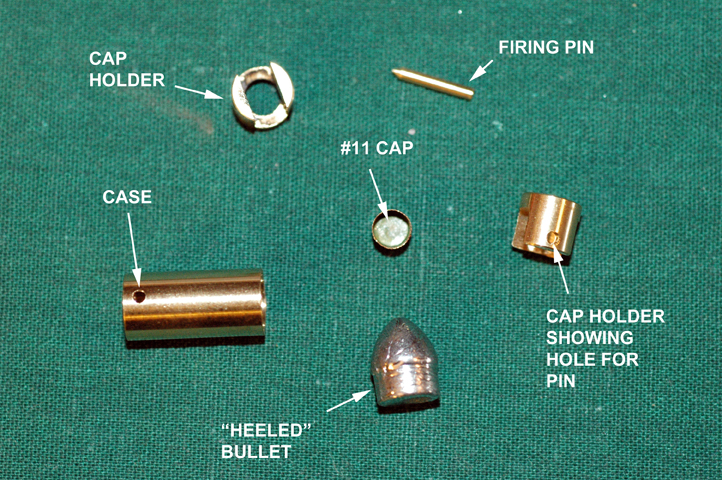
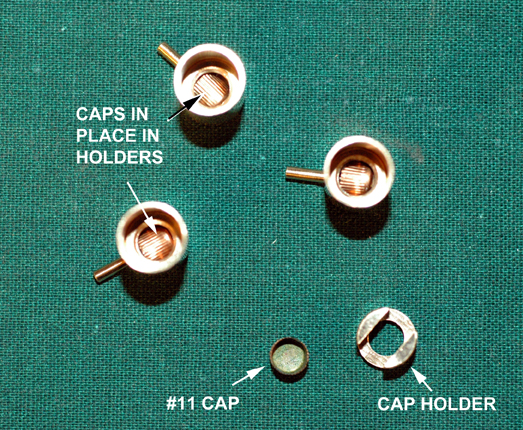
The cap holder takes up considerable space in the small 7mm case. I found I could only get about 3.5 grains of FFFFg black powder into it as a main charge. That's not much! The bullets supplied with the kit weigh 52 grains and have a diameter of 0.30"; they're of the "heeled" type with a 0.284" shank to fit inside the thick-walled case.
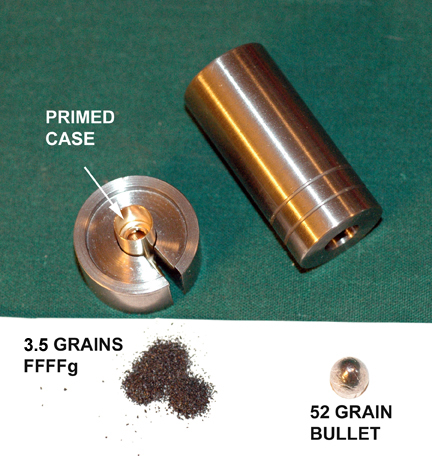
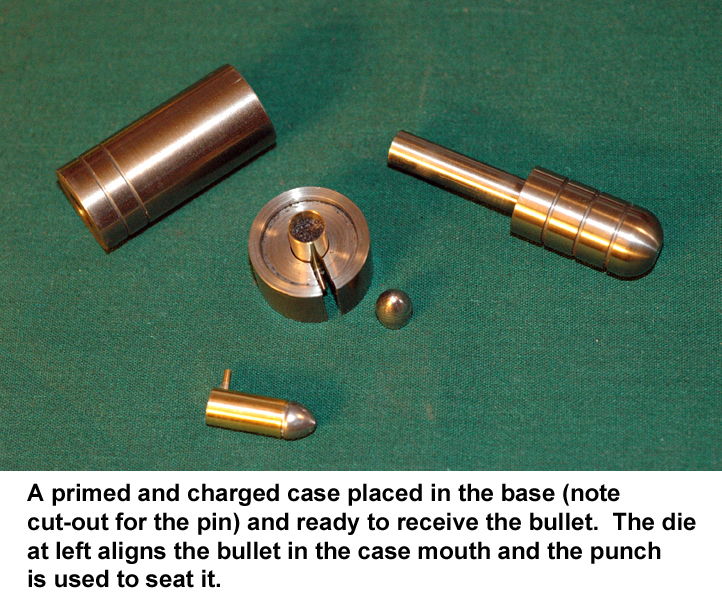
Having only 12 cases to work with, I couldn't do meaningful load development, but I was able to get some impression of the gun's capabilities. Reasoning that this is a "belly gun," intended to be used at very close range, I chose to shoot at five paces' distance, less than the seven yards usually used for such tests. At that range I was able to put six rounds fired double action into about an eight-inch circle, with shots striking high and to the left. Despite the complete lack of any form of rear sight, shooting it single action at the same range put six shots into a respectable three inches. If 12 rounds can be taken as a valid sample, reliability was good: I didn't have a single misfire, something I'm not sure would be true for 12 rounds from most of the percussion revolvers I own.
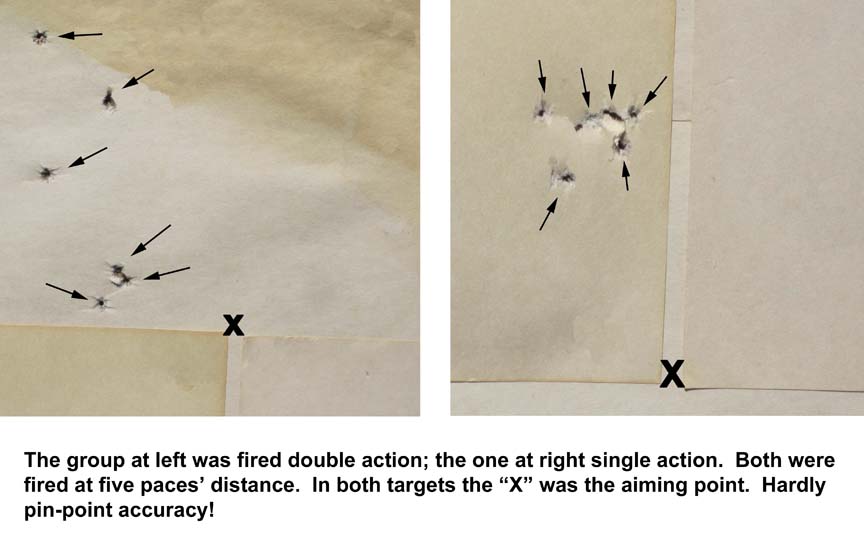
A 7mm gun using a tiny charge is no fire-breathing powerhouse: that 52 grain bullet at 500 fps has all of 29 foot-pounds of energy, laughably inadequate as a personal defense weapon by modern standards. The .25 ACP and the .22 Short, both universally regarded as pipsqueaks, significantly exceed this level of performance. The larger calibers, 9 and 12 mm, would no doubt have nominally better ballistics, but surely couldn't compare to modern rounds.
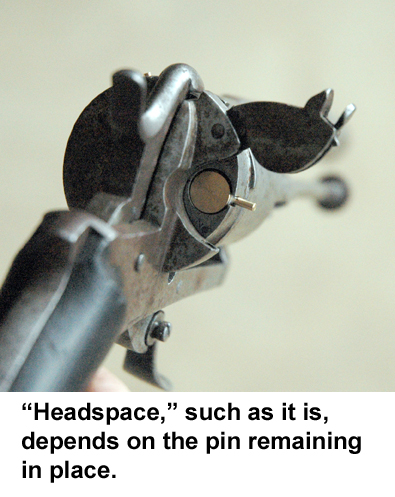
As "advanced" as this system may have been in its day, firing it revealed several other oddities. One I would never have predicted was that upon firing the pins often were blown out of the cases: only 3 out of 12 pins were retained. That allowed the cases (which of course have no rim) to slip deeper into the chambers of the cylinder, something that obviously can't happen in a revolver using true rimmed rounds. They slipped in deeply enough to be invisible from the rear and at first I thought they'd fallen out! This complicated extraction quite a bit, not to mention slowing the reloading process.
Another issue arose during shooting. A partially protruding pin from a fired case-one that didn't come all the way out-jammed the gun by impacting the lower frame. I had to pull the pin out with a small pair of pliers, to allow the cylinder to revolve for the next shot. This would be an unpleasant thing to have happen if the gun were being used "for real."
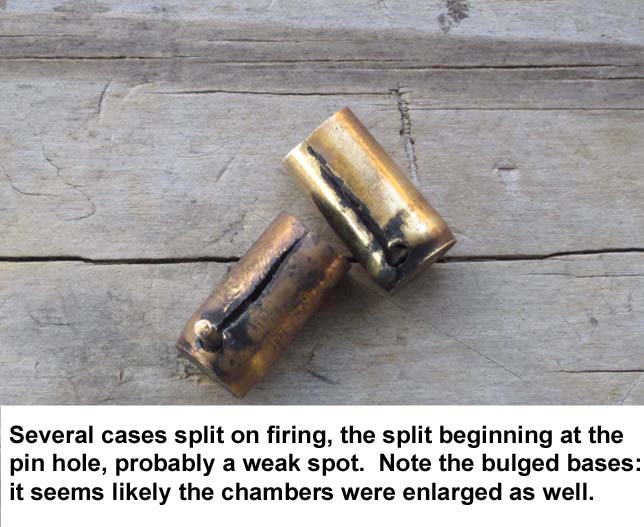
Of the twelve rounds, two cases split lengthwise, the break beginning at the point where the pinhole is bored through the case wall. This was not, I think, the fault of the ammunition: I expect the chambers may have been oversized, thanks to the age of the gun and the wear-and-tear it has had in its long life.
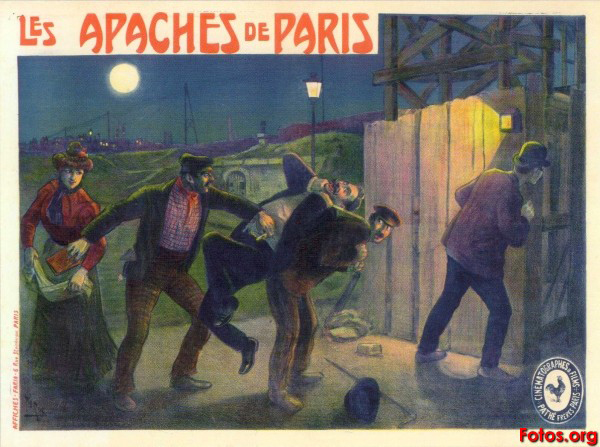
During his escape from Boer captivity in 1899, Winston Churchill famously used a 9mm pinfire revolver provided by a sympathizer with whom he took brief shelter. In his memoir My Early Life Churchill described this gun as, ".a moral support, though it was not easy to see in what way it could be helpfully applied to any problem I was likely to have to solve." That's a sentiment with which I would have to agree. Having a pinfire revolver in your coat pocket on a foggy night in a dicey section of 19th-Century Paris would have been minimal comfort, marginally better than bare hands against a gang of knife-wielding apaches demanding money. But given a choice, knowing what I know now, I think a better contemporary choice would have been a nice compact .36 caliber percussion revolver, such as the Colt 1862 Police.
| HUNTING | GUNS | DOGS |
| FISHING & BOATING | TRIP REPORTS | MISCELLANEOUS ESSAYS |
| CONTRIBUTIONS FROM OTHER WRITERS|
| RECIPES |POLITICS |